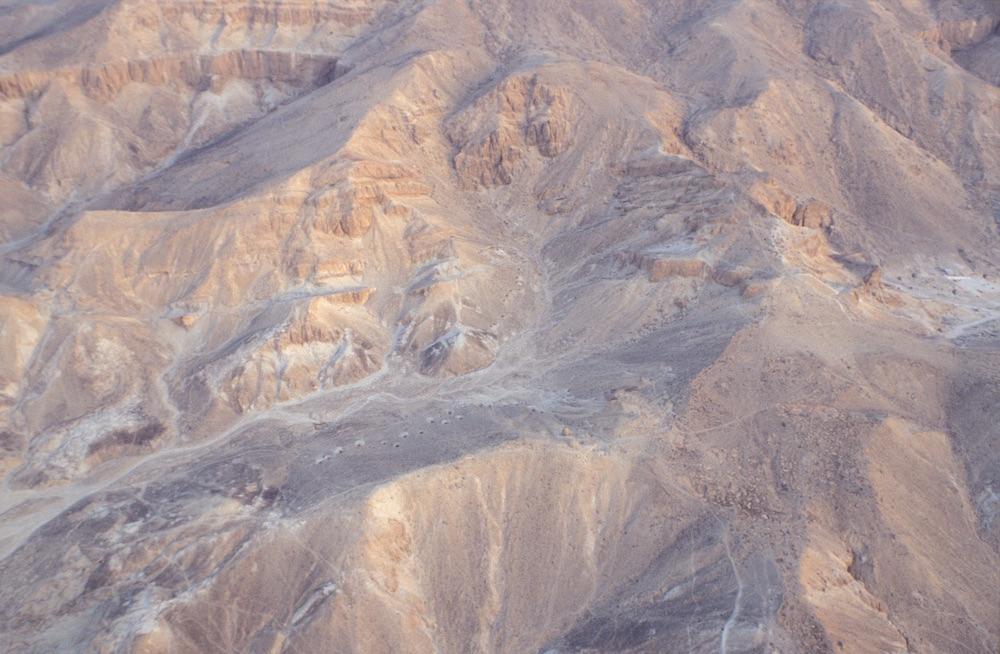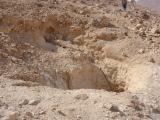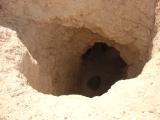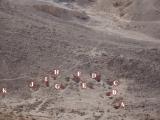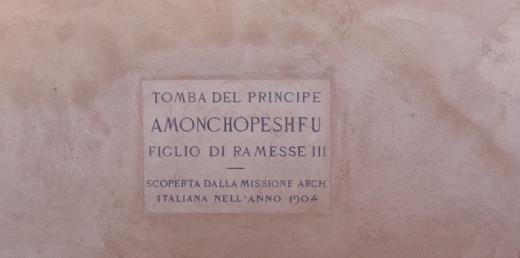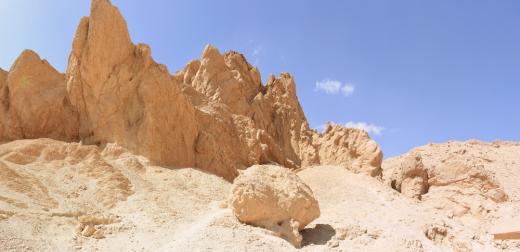QV J
Anonymous
Entryway A
See entire tombA rough vertical shaft provides access to the tomb.
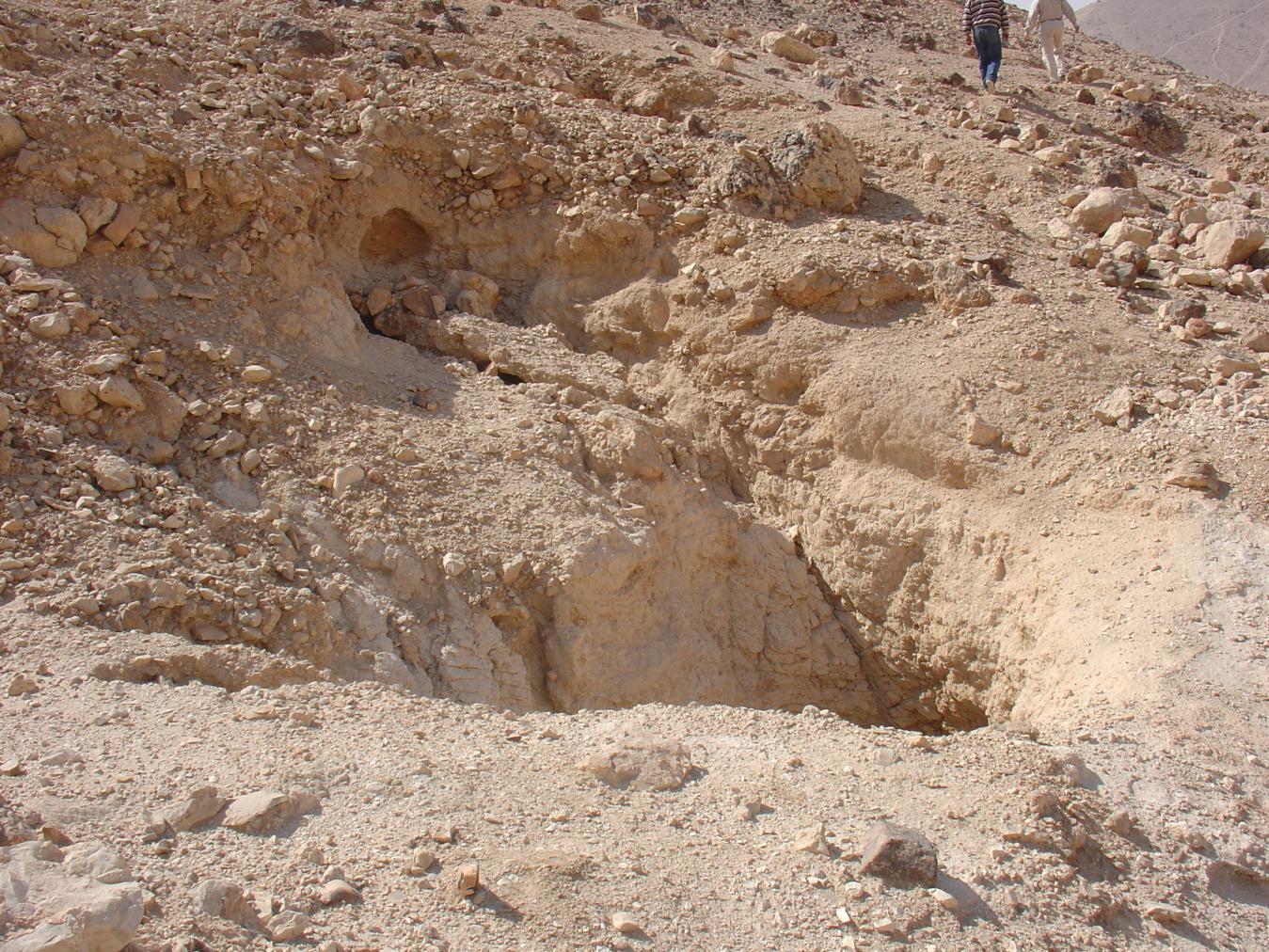
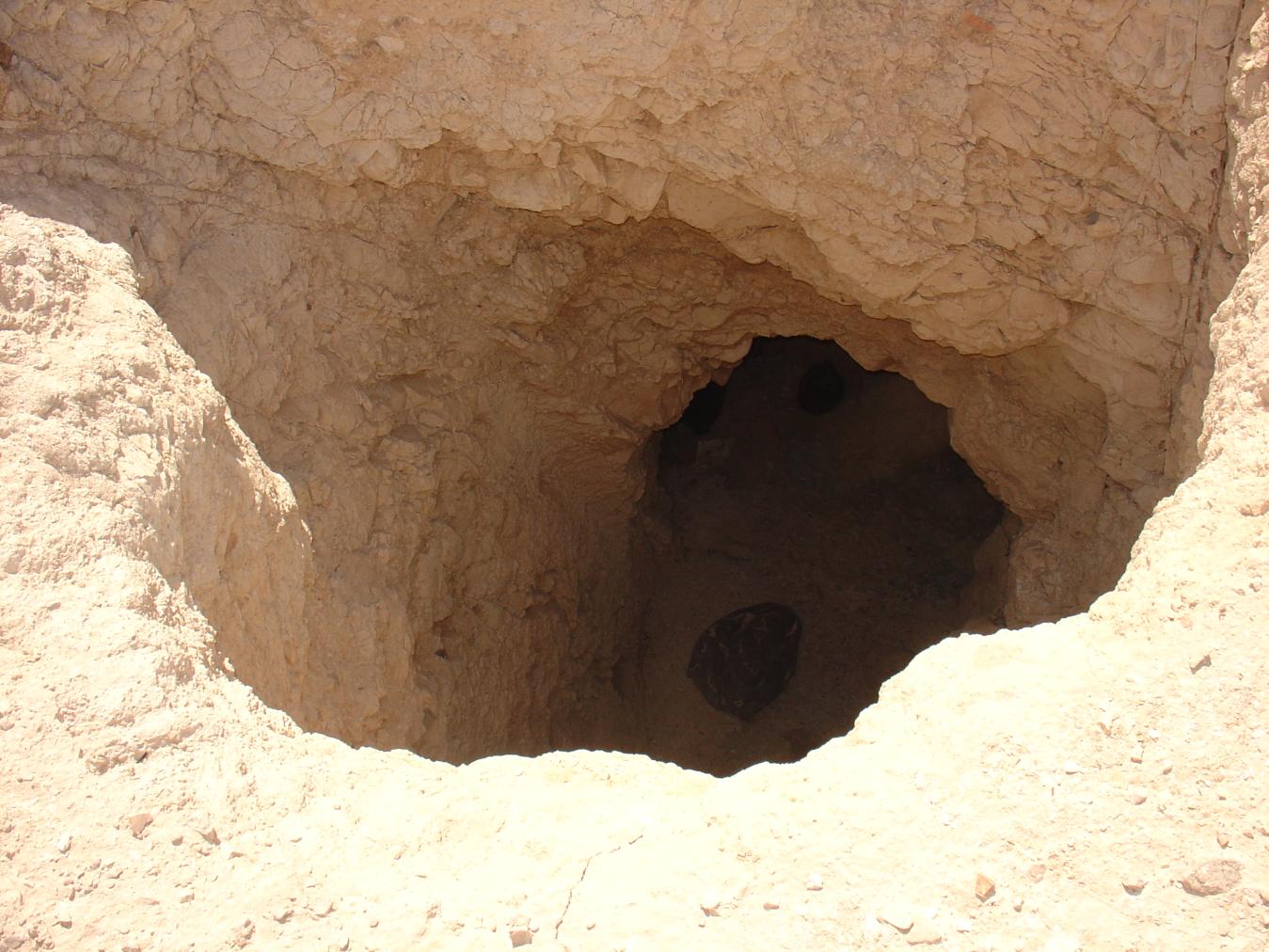
Burial chamber B
See entire tombA roughly-cut undecorated burial chamber that lies on axis with the tomb's entrance.
Chamber plan:
RectangularRelationship to main tomb axis:
ParallelChamber layout:
Flat floor, no pillarsFloor:
One levelCeiling:
Flat
About
About
QV J is located at the mouth of the Valley of the Three Pits, in close proximity to tombs QV A through QV K. It consists of a rectangular shaft (A) leading to a rough, undecorated burial chamber (B). The owner of the tomb is unknown.
The tomb was discovered by Franco-Egyptian Mission in 1989-90. The location was visible due to the rubble that had accumulated in front of the shaft. This rubble contained stones and potsherds, indicating that the tomb must have been plundered at some point. This was confimed by the presence of later shallow burial pits placed above the tomb, which could not be dated by the Franco-Egyptian Mission as they contained only skeletons and balanite nuts.
Objects recovered from QV J include fragments of a vase of foreign origin, called a double bilbil vase, fragments of alabaster vessels, and several fragmentary clay balls with blue and black glazed frit. The latter are related to a rite rarely represented in the New Kingdom called “hitting the ball”. It is represented in the shrine of Hathor at Dayr al-Bahari and shows Thutmes III officiating with the assistance of a priest. The execution of the rite, similar to a game, was believed to delight Hathor, who would subsequently guarantee the king’s successful reign and provide him with “Millions of years”.
Noteworthy features:
QV J belongs to a group of 18th Dynasty tombs in the Valley of the Three Pits that were all constructed under the reign of Thutmes III and belonged to elite officials and members of the royal court.
Site History
The tomb was constructed in the 18th Dynasty and emptied at a later unknown period. The site was subsequently used for more burials in the form of shallow pits. These could not be dated by the Franco-Egyptian Mission due to a lack of datable material.
Dating
This site was used during the following period(s):
Exploration
Conservation
Site Condition
Concerns about structural stability prevented the GCI-SCA from assessing the interior of the tomb. The area immediately adjacent to the entrances is severely eroded and the shaft has been partially filled with debris. A red powder was cemented to the tomb floor at the time of the Franco-Egyptian investigations, attesting to previous water infiltration. The ceiling had also collapsed.
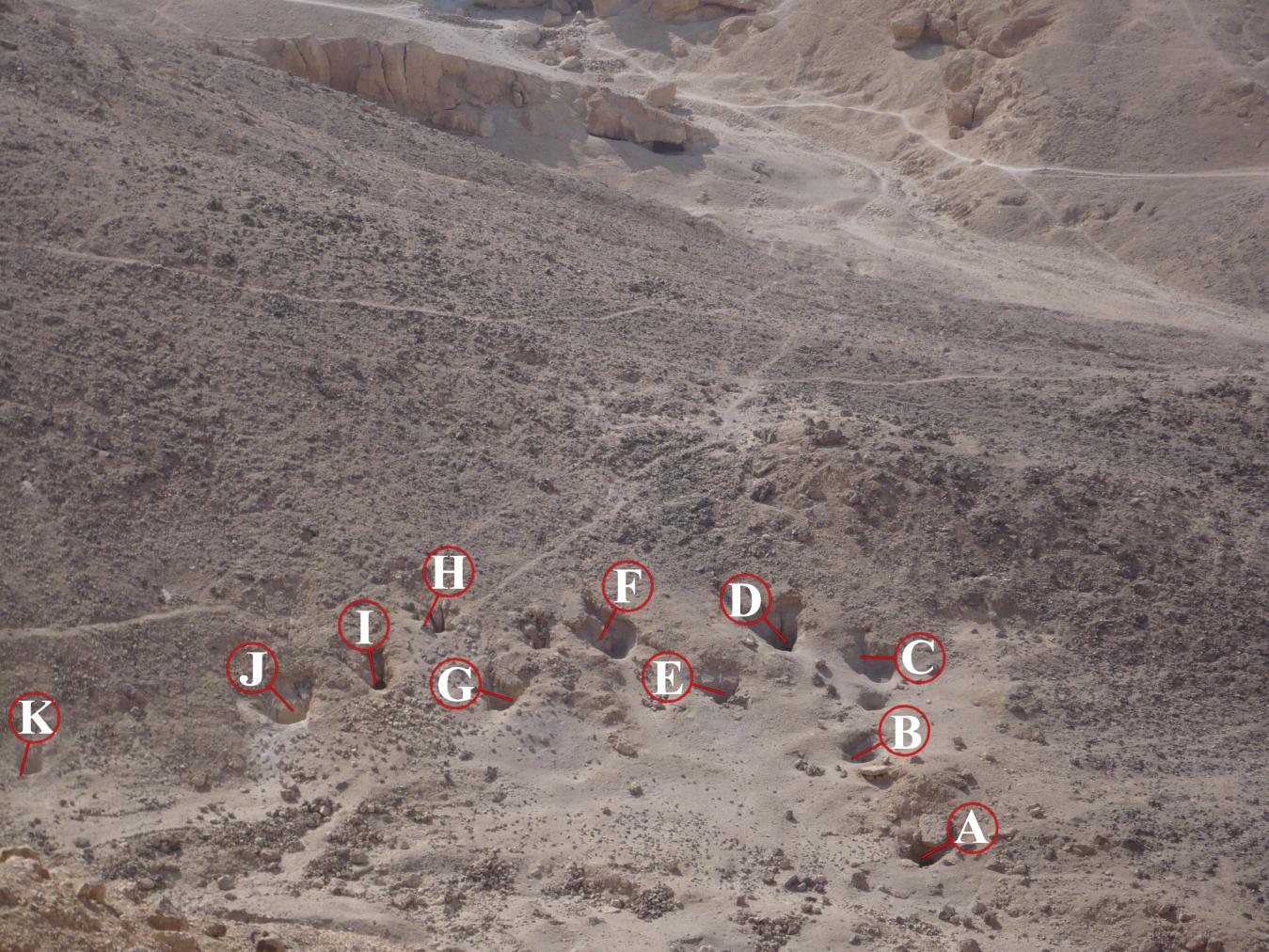


Articles
Tomb Numbering Systems in the Valley of the Queens and the Western Wadis
Geography and Geology of the Valley of the Queens and Western Wadis
Bibliography
CNRS mission report: Centre national de la recherche scientifique (France). Rapport des activités scientifiques et administratives 1992-1994. URA no. 1064. Recherches sur les nécropoles thébaines et le Ramésseum; Publication des temples de la Nubie, 1992-1994.
CNRS mission report: Centre national de la recherche scientifique (France). Rapport des activités scientifiques et administratives: perspectives 1991-1992 URA no. 1064, 1991-1992.
Daressy, Georges. Trois points inexplorés de la nécropole thébaine, Annales du Service des antiquités de l’Egypte 2 (1901): 133-136.
Demas, Martha and Neville Agnew (eds). Valley of the Queens. Assessment Report. Los Angeles: The Getty Conservation Institute, 2012, 2016. Two vols.
Leblanc, Christian, and Magdi Mohamed Fekri. La prospection archéologique des vallées latérales de tA st nfrw. In: Atti del Sesto Congresso internazionale di egittologia. Vol. 2. Turin: International Association of Egyptologists, 1993: 259-68.
Loyrette, Anne-Marie. À propos de boules en fritte glaçurée trouvées dans la Vallée des trois puits. In: Jacke Phillips, and Lanny Bell (eds.) Ancient Egypt, the Aegean, and the Near East: Studies in Honour of Martha Rhoads Bell, Vol. 2. San Antonio: Van Sicklen Books, 1997: 359-68.
Loyrette, Anne-Marie. Les tombes de la Vallée des trois puits à Thèbes-Quest. Memnonia, 8 (1997): 177-195.
Schiaparelli, Ernesto. Realazione sui lavon della Missione archeologica italiana in Egitto, anni 1903-1920. Explorazione della “Valle delle Regina” nella necropolis di Tebe. Vol. 1. Turin: Casa editrice Giovanni Chiantore, 1923.
